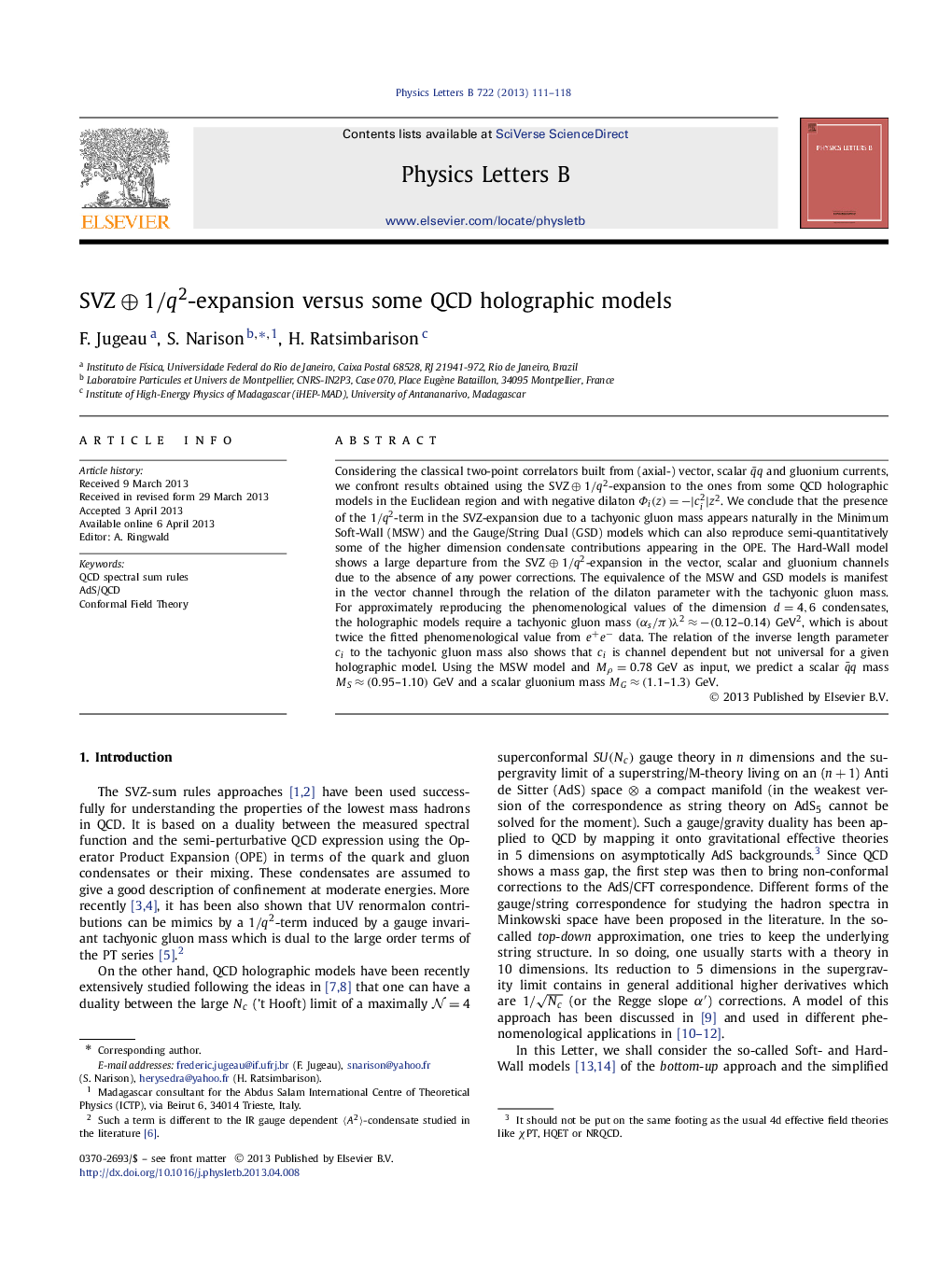| کد مقاله | کد نشریه | سال انتشار | مقاله انگلیسی | نسخه تمام متن |
|---|---|---|---|---|
| 8188727 | 1528840 | 2013 | 8 صفحه PDF | دانلود رایگان |
عنوان انگلیسی مقاله ISI
SVZâ1/q2-expansion versus some QCD holographic models
دانلود مقاله + سفارش ترجمه
دانلود مقاله ISI انگلیسی
رایگان برای ایرانیان
کلمات کلیدی
موضوعات مرتبط
مهندسی و علوم پایه
فیزیک و نجوم
فیزیک هسته ای و انرژی بالا
پیش نمایش صفحه اول مقاله

چکیده انگلیسی
Considering the classical two-point correlators built from (axial-) vector, scalar q¯q and gluonium currents, we confront results obtained using the SVZâ1/q2-expansion to the ones from some QCD holographic models in the Euclidean region and with negative dilaton Φi(z)=â|ci2|z2. We conclude that the presence of the 1/q2-term in the SVZ-expansion due to a tachyonic gluon mass appears naturally in the Minimum Soft-Wall (MSW) and the Gauge/String Dual (GSD) models which can also reproduce semi-quantitatively some of the higher dimension condensate contributions appearing in the OPE. The Hard-Wall model shows a large departure from the SVZâ1/q2-expansion in the vector, scalar and gluonium channels due to the absence of any power corrections. The equivalence of the MSW and GSD models is manifest in the vector channel through the relation of the dilaton parameter with the tachyonic gluon mass. For approximately reproducing the phenomenological values of the dimension d=4,6 condensates, the holographic models require a tachyonic gluon mass (αs/Ï)λ2ââ(0.12-0.14) GeV2, which is about twice the fitted phenomenological value from e+eâ data. The relation of the inverse length parameter ci to the tachyonic gluon mass also shows that ci is channel dependent but not universal for a given holographic model. Using the MSW model and MÏ=0.78 GeV as input, we predict a scalar q¯q mass MSâ(0.95-1.10) GeV and a scalar gluonium mass MGâ(1.1-1.3) GeV.
ناشر
Database: Elsevier - ScienceDirect (ساینس دایرکت)
Journal: Physics Letters B - Volume 722, Issues 1â3, 13 May 2013, Pages 111-118
Journal: Physics Letters B - Volume 722, Issues 1â3, 13 May 2013, Pages 111-118
نویسندگان
F. Jugeau, S. Narison, H. Ratsimbarison,